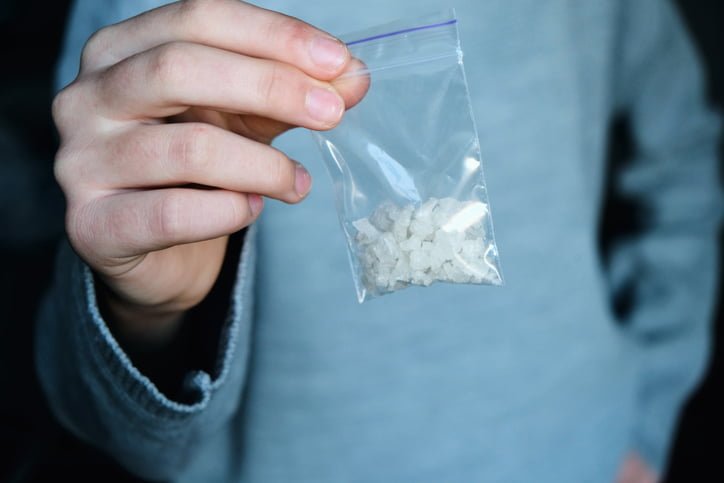
Meth Addiction Symptoms, Signs & Effects
Methamphetamine, commonly known as meth, is a highly addictive drug that stimulates the central nervous system. It has a profound impact on mental health and physical well-being. In the United States, meth addiction has become a significant public health concern, with an estimated 1.6 million adults reporting past-year meth use. This article aims to provide a comprehensive overview of meth addiction symptoms, signs, and treatment options.
Understanding Methamphetamine
Methamphetamine is a Schedule II substance, indicating its high potential for abuse. It comes in various forms, including a white powder and large crystal chunks known as “crystal meth.” People use different methods to consume meth, such as smoking, snorting, or injecting, which can cause rapid eye movement and dilated pupils. The drug’s highly addictive nature is partly due to its effects on dopamine in the brain.
The High and Its Immediate Effects
Meth use leads to a surge of euphoria, alertness, and energy. However, these short-term effects come at a cost. Meth increases heart rate and blood pressure, posing risks for heart attack and stroke. Elevated body temperature is another side effect that can be dangerous.
Signs and Symptoms of Meth Addiction
Recognizing the signs and symptoms of meth addiction is crucial for timely intervention. Here are some common signs and symptoms:
Behavioral Signs
- Increased activity
- Decreased appetite
- Insomnia
- Aggressive or violent behavior
- Paranoia
- Hallucinations
Physical Signs
- Extreme weight loss
- Skin sores
- “Meth mouth” characterized by severe tooth decay
- Dilated pupils
- Rapid eye movement
- Elevated body temperature
Psychological Symptoms
- Mood swings
- Anxiety
- Depression
- Confusion
- Memory loss
Long-term Effects and Risks
Long-term use of meth can lead to devastating health effects. Neurological issues such as memory loss, cognitive deficits, and even stroke can occur. Cardiovascular problems like increased heart rate and high blood pressure can escalate into heart attacks. Methamphetamine use disorder often leads to violent behavior, exacerbating mental health issues like anxiety and depression. Over time, meth abuse can also lead to severe dental problems, commonly referred to as “meth mouth,” and skin sores due to constant scratching, giving the illusion of bugs crawling under the skin.
Causes and Risk Factors
Meth addiction is a complex issue with multiple contributing factors. Genetic predisposition plays a role; individuals with a family history of substance abuse or mental illness are at higher risk. Environmental triggers such as stress, peer pressure, and easy availability of the drug can also contribute to meth use. The physical changes that meth induces in the brain, particularly the dopamine system, make it highly addictive and challenging to quit.
Protective Factors and Prevention
Protective factors against meth addiction include strong self-control and resilience. A supportive community and parental monitoring can act as deterrents against substance use disorder. Educational programs that focus on the dangers of meth use and provide alternative coping mechanisms can also be effective in prevention.
Treatment Options for Meth Addiction
Detoxification
Detoxification is the initial step in treating meth addiction. It involves the removal of the drug from the system and can last for a week or more. Meth withdrawal symptoms can last for several days to weeks, with some individuals experiencing lingering effects for months. Medical supervision is crucial during this period to manage symptoms like depression, anxiety, and extreme fatigue.
Inpatient Treatment
Inpatient treatment is often recommended for severe cases of meth addiction. It provides a structured environment away from triggers and offers round-the-clock medical and psychological support. This option is particularly useful for individuals who have co-occurring mental health issues or are at risk of severe withdrawal symptoms.
Outpatient Treatment
Outpatient treatment is more flexible and is generally suitable for those with less severe addiction. It allows individuals to maintain their daily activities while attending scheduled treatment sessions. This option is often used as a follow-up to inpatient treatment to ensure long-term recovery.
Behavioral Therapies
Various forms of behavioral therapies like Cognitive Behavioral Therapy (CBT) and Contingency Management can help manage cravings and triggers. These therapies are often integrated into both inpatient and outpatient treatment plans.
Statistics and Real-world Implications
Meth addiction is a growing problem with severe societal and healthcare implications. According to recent statistics, meth use is on the rise, and methamphetamine abuse is becoming more prevalent. In 2021, approximately 32,537 people died from an overdose involving psychostimulants with abuse potential other than cocaine (primarily methamphetamine).
Conclusion
Meth addiction is a severe and growing problem that affects both physical and mental health. Recognizing the warning signs and symptoms can lead to early intervention and a better chance of recovery. Various treatment options are available, and professional help is crucial for overcoming this highly addictive drug. With the right support, recovery is possible.
Sources
- https://nida.nih.gov/publications/research-reports/methamphetamine/what-scope-methamphetamine-misuse-in-united-states
- https://nida.nih.gov/publications/drugfacts/methamphetamine
- https://www.samhsa.gov/meth
- https://www.cdc.gov/mmwr/volumes/69/wr/mm6912a1.htm